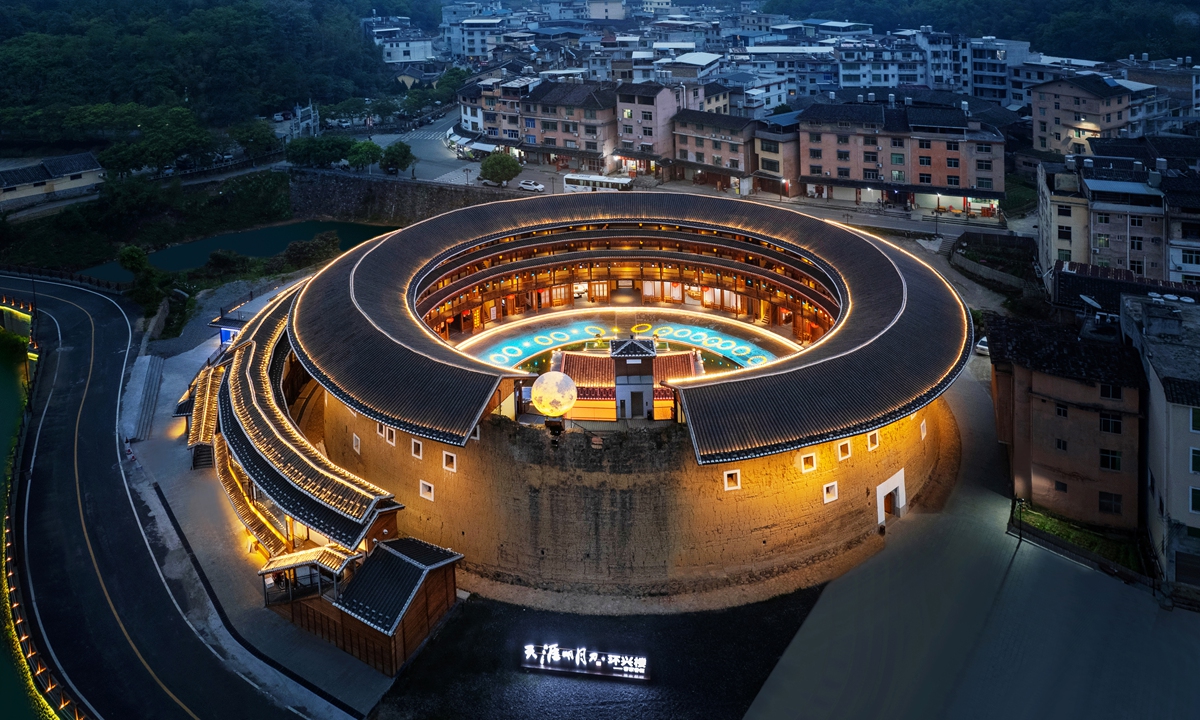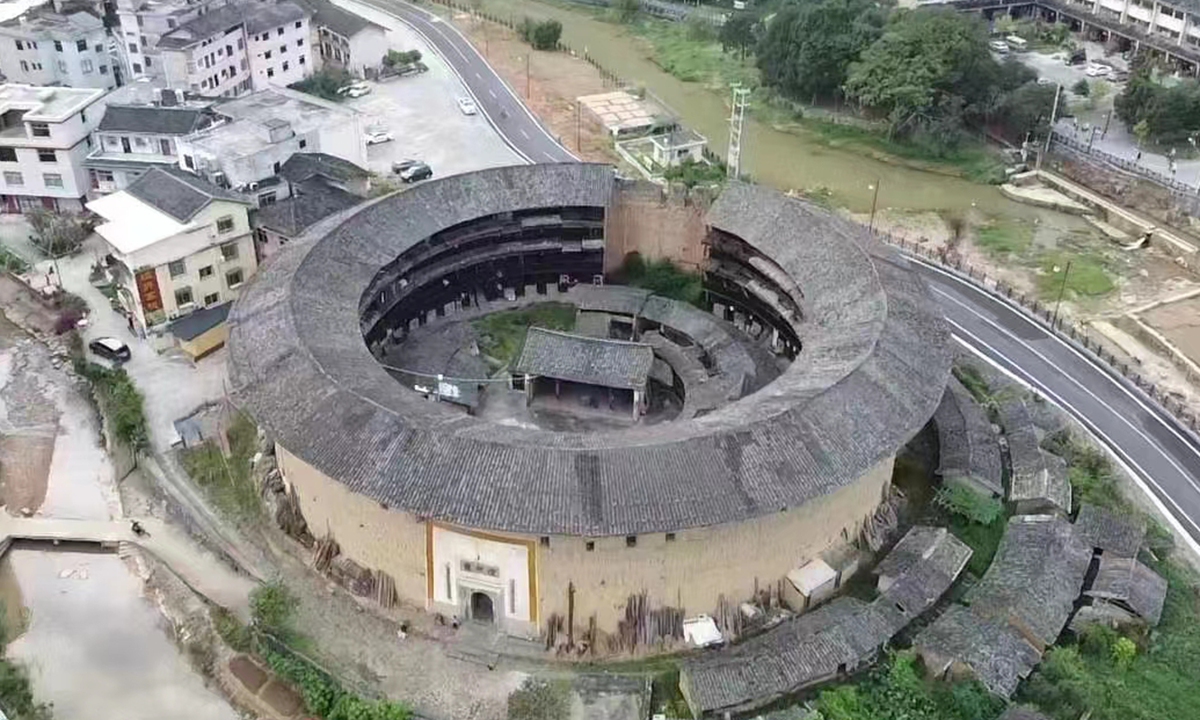ARTS / CULTURE & LEISURE
New project turns once unattended cultural heritage into lively community
More than a home

The Huanxing Tulou after renovation Photo: Courtesy of Luo Honghua
Looking like large circular castles, Fujian Tulou is the unique dwelling of the Hakka people in the mountainous areas of East China's Fujian Province. The Tulou buildings were once pushed to the fore of public opinion after one of them crumbled due to lack of maintenance, but now they have been revived through new means with the help of local government and companies.Pushing through the gate at the newly renovated Huanxing Tulou, visitors step into a world they usually only read about in the adventures of Chinese martial artists as they join an interactive role-playing experience inspired by a popular online game in China.
"This is part of our scheme to revive this 500-year-old building. In addition, coffee shops, restaurants and hotels have come here to form a community for visitors to enjoy," Luo Honghua, director of the Huanxing Tulou cultural tourism project, told the Global Times.
Thousands of these buildings are scattered across Fujian, making them a symbol of the tradition of Hakka families living together in harmony for the past hundreds of years.
The building's appeal has been boosted, both domestically and worldwide, after they appeared in the Disney movie Mulan and Chinese animated feature film Big Fish & Begonia. And now, they are being given new life.

The Huanxing Tulou before renovation Photo: Courtesy of Luo Honghua
Making movesHuanxing Tulou, an unattended building that has undergone at least two fires, was once used as a warehouse for locals before the Yongding government in Fujian Province intervened, and funded a renovation project together with local businesses.
In addition to the Huanxing Tulou project, a number of companies are moving into many of these Tulou buildings to contribute to efforts to protect this cultural heritage.
Two missions await these companies after they arrive. First, an all-round inspection of the building must be conducted to determine their condition, and then a plan must be drawn up to turn it into a vital tourism spot.
"The condition of the building was quite awful," Luo recalled the beginning of the Huanxing Tulou renovation project launched in June 2022.
"Except for the solid walls, the rest of the building, such as the corridors, was extremely dilapidated."
Covering an area of 6,200 square meters, the building was fully renovated with the help of experienced local craftsmen. The project cost a total of 120 million yuan ($17 million) all told.
Luo told the Global Times that the renovated Huanxing Tulou will not officially open for business until next week, but during the trial runs held over the last six months, the hotels at the site were fully booked, especially during the National Day holidays in 2022.
High technology has also played a role in the revitalization project. Speakers playing music and sounds of nature and lights have been installed around the site to create a spectacular atmosphere, especially at night. There are also plans to incorporate other technologies such as augmented reality.
A Hakka treasure
As the Huanxing Tulou is a treasure house that combines cultural relic protection, private real estate and tourist attractions, the management has had to work hard to find the right balance between conserving heritage and turning the venue into a successful business. Their plans have been constantly evolving and developing.
"In building this cultural tourism project, we are only able to protect the building through our professionalism and business expectations, but this is our social responsibility as a local enterprise," Luo said.
A total of 46 Tulou in the province were listed as UNESCO World Heritage Sites in 2008. Since then, at least 800 million yuan has been invested into the maintenance and improvement of the buildings in the Yongding area, local official Wang Jing revealed to China Travel News.
"It is both the culture and architectural design that fascinate many visitors," Shanghai-based cultural scholar Li Nanyi told the Global Times on Wednesday.
History records show that after the Hakka people, a sub-group of the Han ethnic group, migrated to Fujian from the Central Plains to avoid social turbulence, they built these unique buildings so their families could live together and support each other.
These buildings, made of earthen walls, wood from fir trees and mud tiles, are both a residence and a defense structure that house around 1,000 people living together. People unite here within the building while they rely on nature and support each other, an embodiment of China's splendid traditional culture, said Li.
For local companies, gathering together popular interactive role-playing experiences, restaurants and accommodations is just one of the social responsibilities of businesses.
"The future of Tulou buildings lies more in the positive social and cultural impact they bring. It is important that more young people experience these buildings, as well as the aesthetics and history behind them," noted Luo.
"They are more than a residence, they present the wisdom of our ancestors and display the concept of family affection and harmony with nature in China," Luo said.
